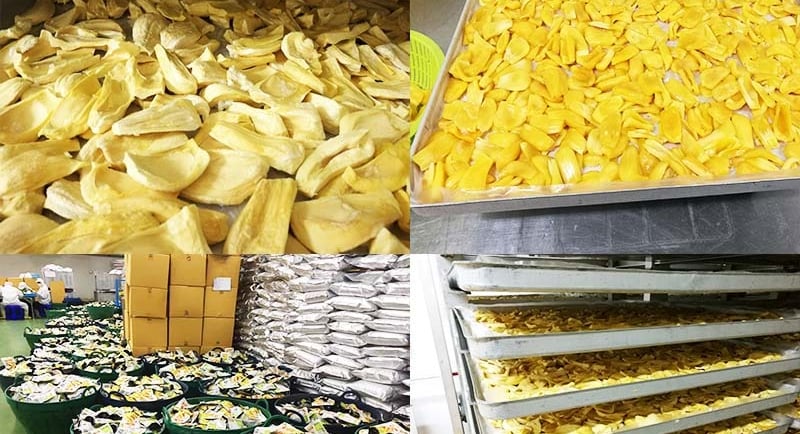Cutting-Edge Cold: Innovations in Freeze-Drying Technology Driving China's Food Future
This article will focus on advancements in equipment, efficiency, and energy consumption.
SUSTAINABILITYPRODUCTIONFREEZE DRIED FOODSFREEZE DRYINGFREEZE DRIED PRODUCTSTECHNOLOGYBUSINESS
6/28/20253 min read


Cutting-Edge Cold: Innovations in Freeze-Drying Technology Driving China's Food Future
China's vast population and burgeoning demand for high-quality, nutritious, and convenient food products are fueling a rapid evolution in food preservation techniques. Among these, freeze-drying technology stands out as a critical innovation, promising to revolutionize the nation's food future. While traditionally energy-intensive and time-consuming, cutting-edge advancements in equipment design, process efficiency, and energy consumption reduction are making freeze-drying an increasingly viable and attractive solution for China's food industry.
Advancements in Equipment: Towards Smarter and Larger Scales
The heart of freeze-drying lies in its equipment, and Chinese manufacturers are making significant strides in developing more sophisticated and robust machines. A key trend is the move towards larger capacity and continuous freeze-drying systems. Traditionally, freeze-drying has been a batch process, but the shift to continuous operations offers substantial benefits, including increased production capacity and streamlined workflows, crucial for meeting large-scale demand.
Innovations in automation and intelligent control systems are also transforming the landscape. The integration of Internet of Things (IoT) and Artificial Intelligence (AI) allows for real-time monitoring and precise adjustment of critical parameters like temperature and vacuum, minimizing manual intervention and optimizing product quality. This level of control ensures consistency and reduces the risk of errors, making the process more reliable for delicate food products.
Furthermore, equipment designs are incorporating alternative cold trap technologies. For instance, the use of alternating cold traps or finned tube coils in cold traps can significantly reduce energy consumption and defrosting downtime. Some Chinese manufacturers are even developing units with automatic de-icing capabilities, allowing continuous production without the need for separate defrosting cycles. This not only saves energy but also dramatically improves operational efficiency.
Boosting Efficiency: Faster Processes and Hybrid Approaches
Efficiency in freeze-drying is being enhanced through several key strategies, aiming to reduce drying times and improve overall throughput. One promising area is the development of hybrid drying techniques. While pure freeze-drying offers superior product quality, it's notoriously slow. Combining freeze-drying with other methods, such as:
* Microwave-assisted freeze-drying (MFD): Applying microwave energy during the freeze-drying process can dramatically accelerate the drying rate by enhancing heat transfer. This technique shows significant potential for high-value foods, reducing processing time without compromising quality, provided hot spots are avoided through careful design and operation.
* Hot-air assisted freeze-drying: Integrating hot air at specific stages, particularly during the desorption phase, can also shorten drying times and reduce energy usage. This hybrid approach can be particularly effective for certain fruits and vegetables, balancing efficiency with quality retention.
* Pulsed Electric Field (PEF) and Ultrasound pre-treatments: These pre-treatments can alter the cellular structure of food, making it more porous and facilitating faster water removal during the freeze-drying process. This leads to shorter drying times and improved energy efficiency.
Beyond hybrid approaches, optimizing the fundamental freeze-drying process itself is crucial. This includes research into optimal freezing protocols and precise control over the primary and secondary drying phases. Ensuring optimal heat and mass transfer within the vacuum chamber is paramount to maximizing efficiency.
Reducing Energy Consumption: A Sustainable Future
The high energy consumption of traditional freeze-drying has been a significant barrier to its widespread adoption. However, a strong focus on sustainability is driving innovations aimed at drastically reducing this footprint.
Key strategies for energy reduction include:
* Improved refrigeration and heat pump systems: More efficient refrigeration units and advanced heat pump technologies are being integrated into freeze-dryers, minimizing the energy required for freezing and sublimation.
* Heat recovery systems: Capturing and reusing waste heat generated during the process to pre-heat incoming materials or for other auxiliary functions can lead to substantial energy savings.
* Optimized chamber design and insulation: Better insulation and sealing of freeze-drying chambers reduce heat loss, maintaining stable temperatures and minimizing energy expenditure.
* Continuous processing: As mentioned earlier, continuous systems inherently offer better energy efficiency compared to multiple small batch units, by reducing standby times and optimizing resource allocation.
* Smart control and automation: By precisely controlling the drying parameters and preventing over-drying or unnecessary refrigeration, intelligent systems contribute directly to energy savings.
* Utilization of renewable energy sources: While still in nascent stages for large-scale industrial freeze-drying, the long-term vision includes integrating renewable energy sources like solar or wind power to power these systems.
China's Food Future: A Freeze-Dried Landscape
These cutting-edge innovations are poised to reshape China's food industry. With enhanced equipment, boosted efficiency, and significantly reduced energy consumption, freeze-drying can become a cornerstone for:
* Extending shelf life and reducing food waste: Transforming perishable produce into long-lasting, stable products, thereby addressing food security concerns.
* Preserving nutritional value and sensory qualities: Freeze-drying is unparalleled in its ability to retain the original color, flavor, texture, and nutrient content of food, meeting the growing consumer demand for healthy and natural products.
* Developing new product lines: Enabling the creation of innovative freeze-dried snacks, ingredients, ready meals, and pet food, expanding market opportunities.
* Facilitating global trade: Lightweight, shelf-stable freeze-dried products are ideal for export, opening new avenues for Chinese agricultural products.
As China continues to invest in research and development, the future of its food industry will undoubtedly be defined by these cold innovations, transforming how food is preserved, distributed, and consumed across the nation and beyond.
